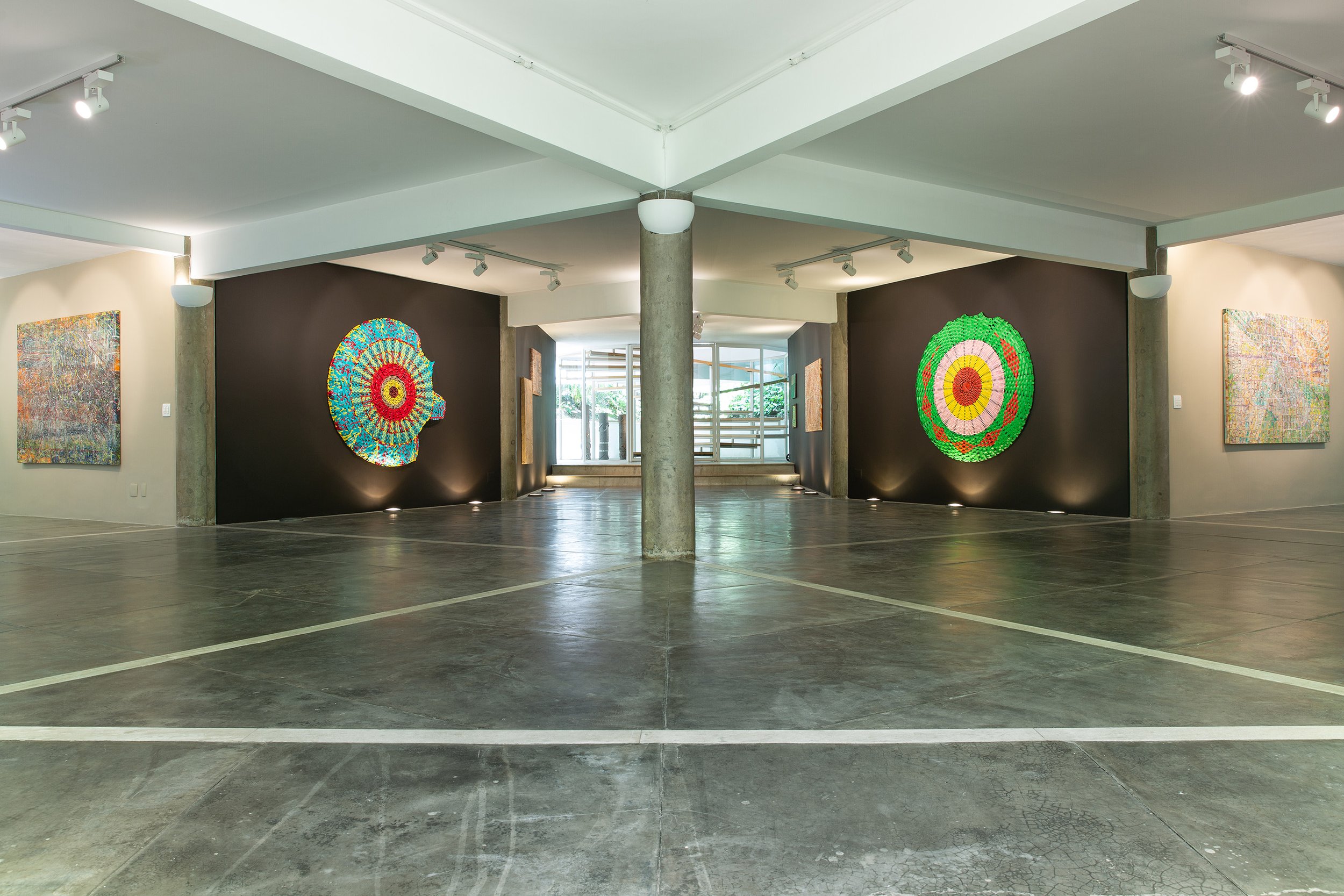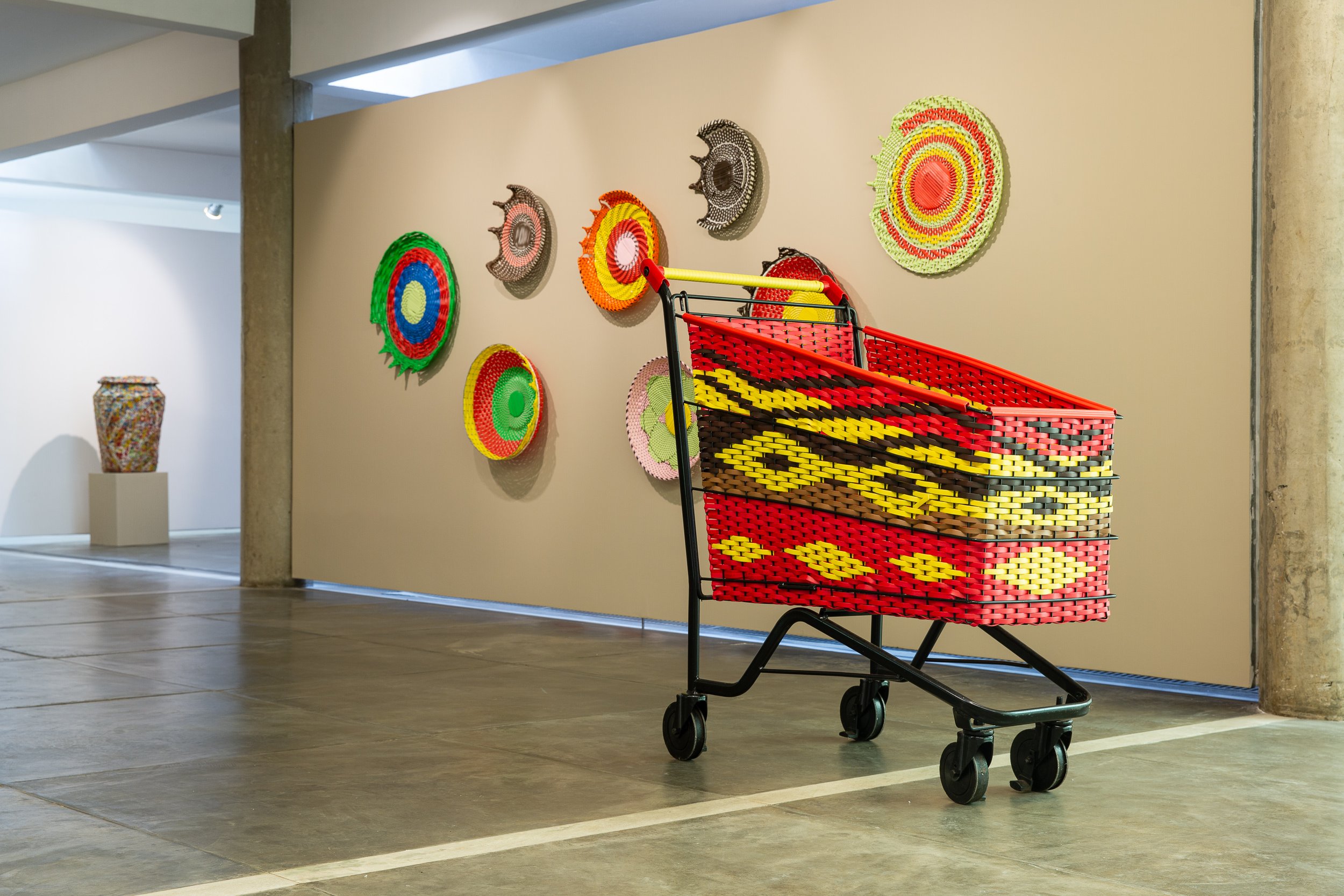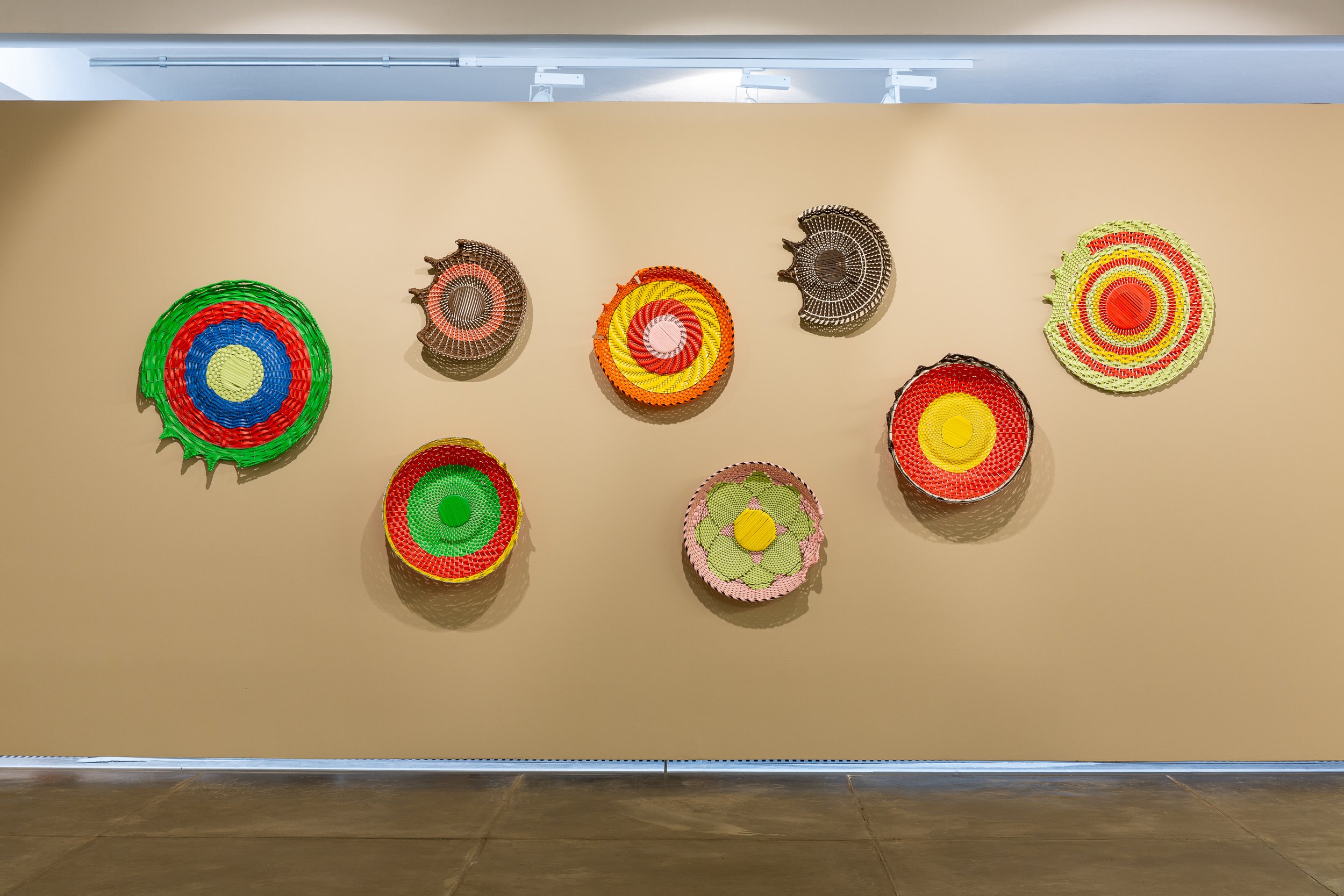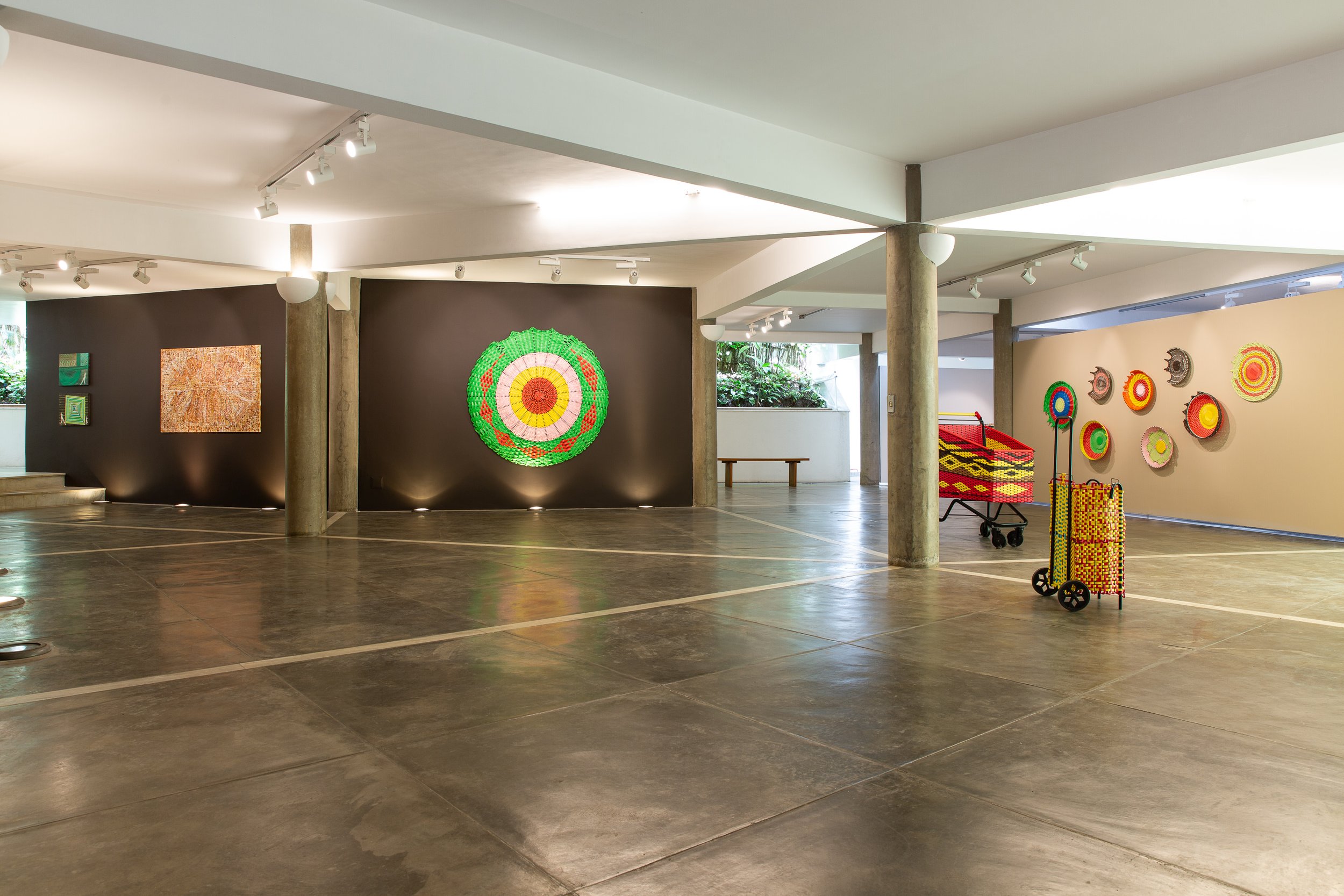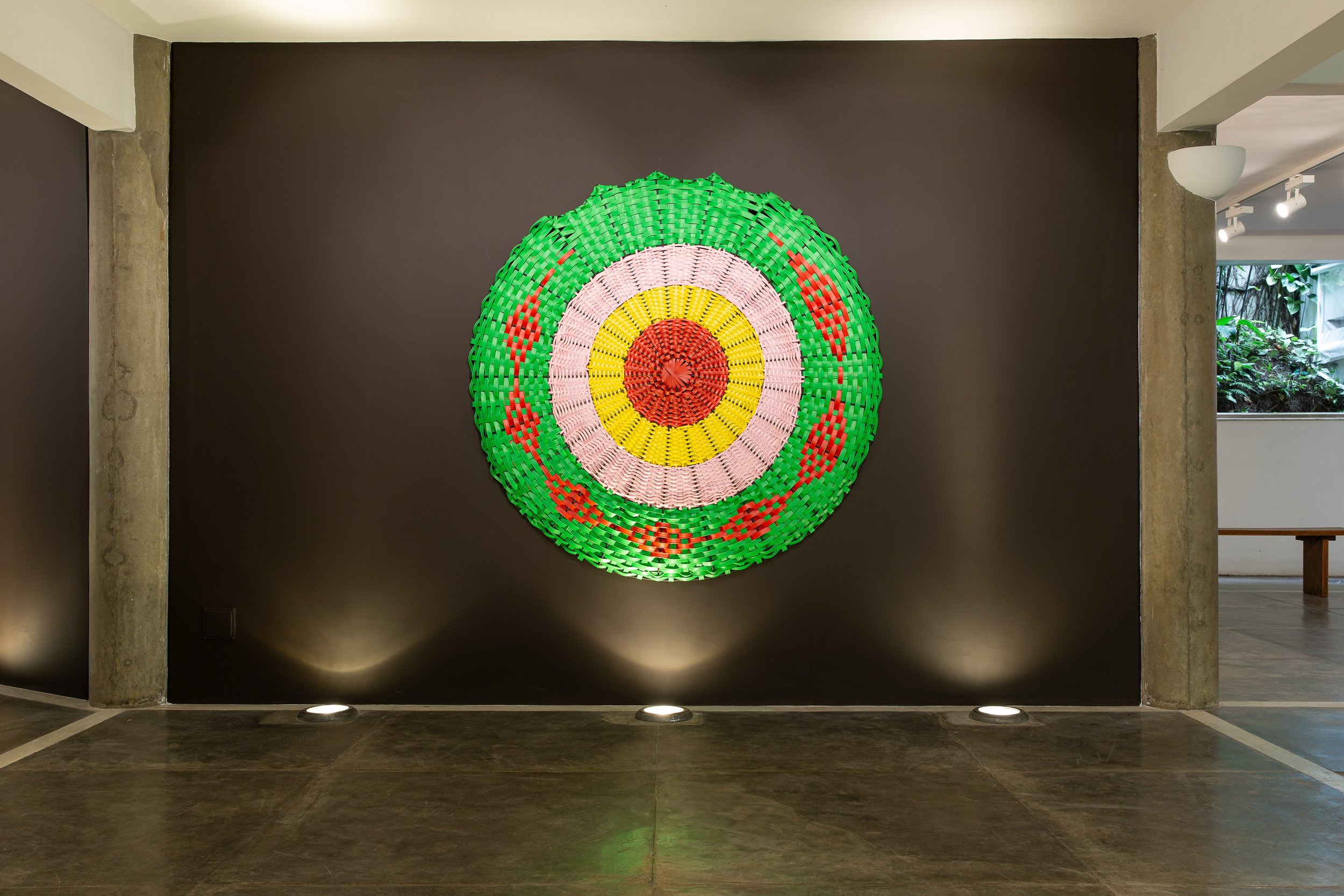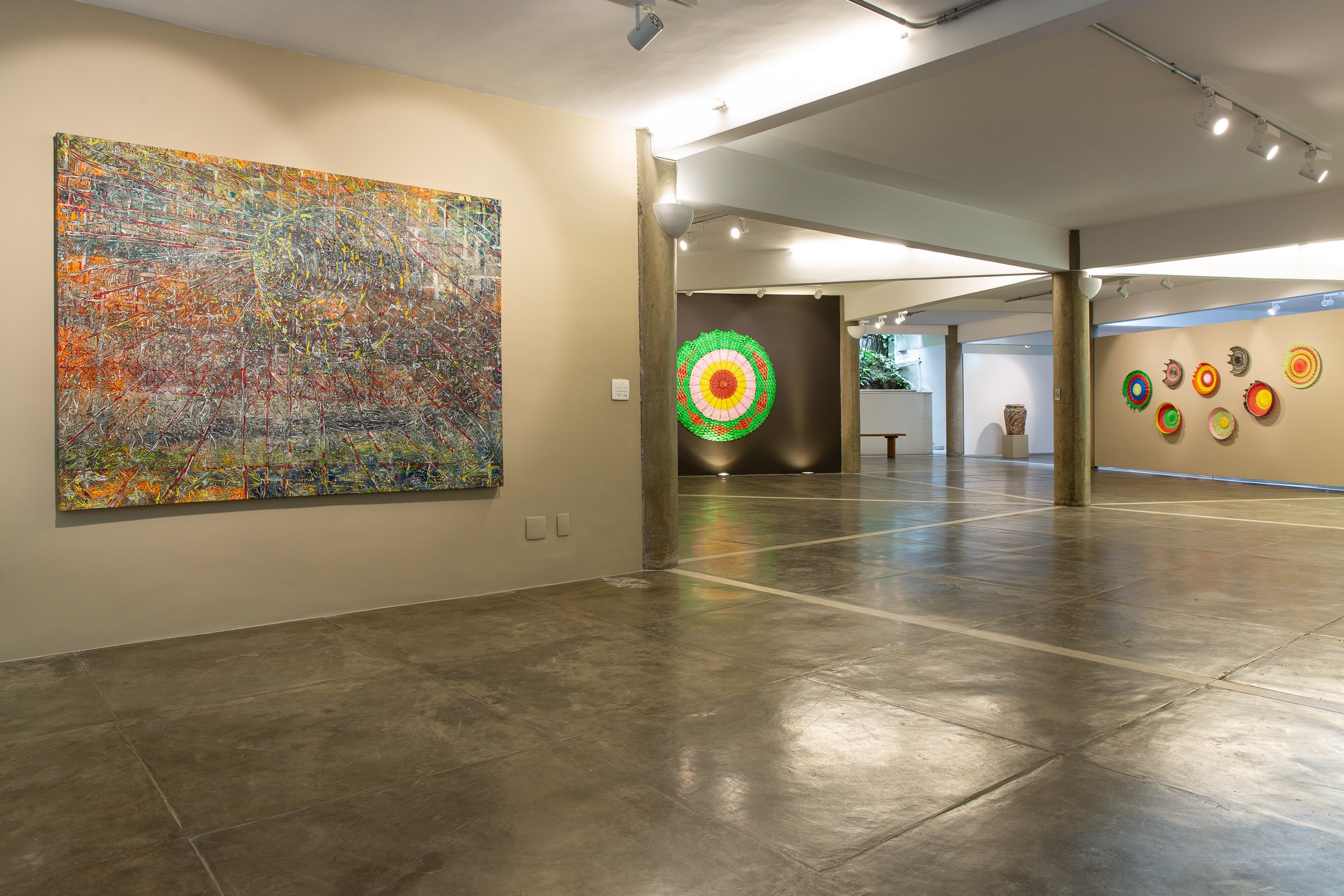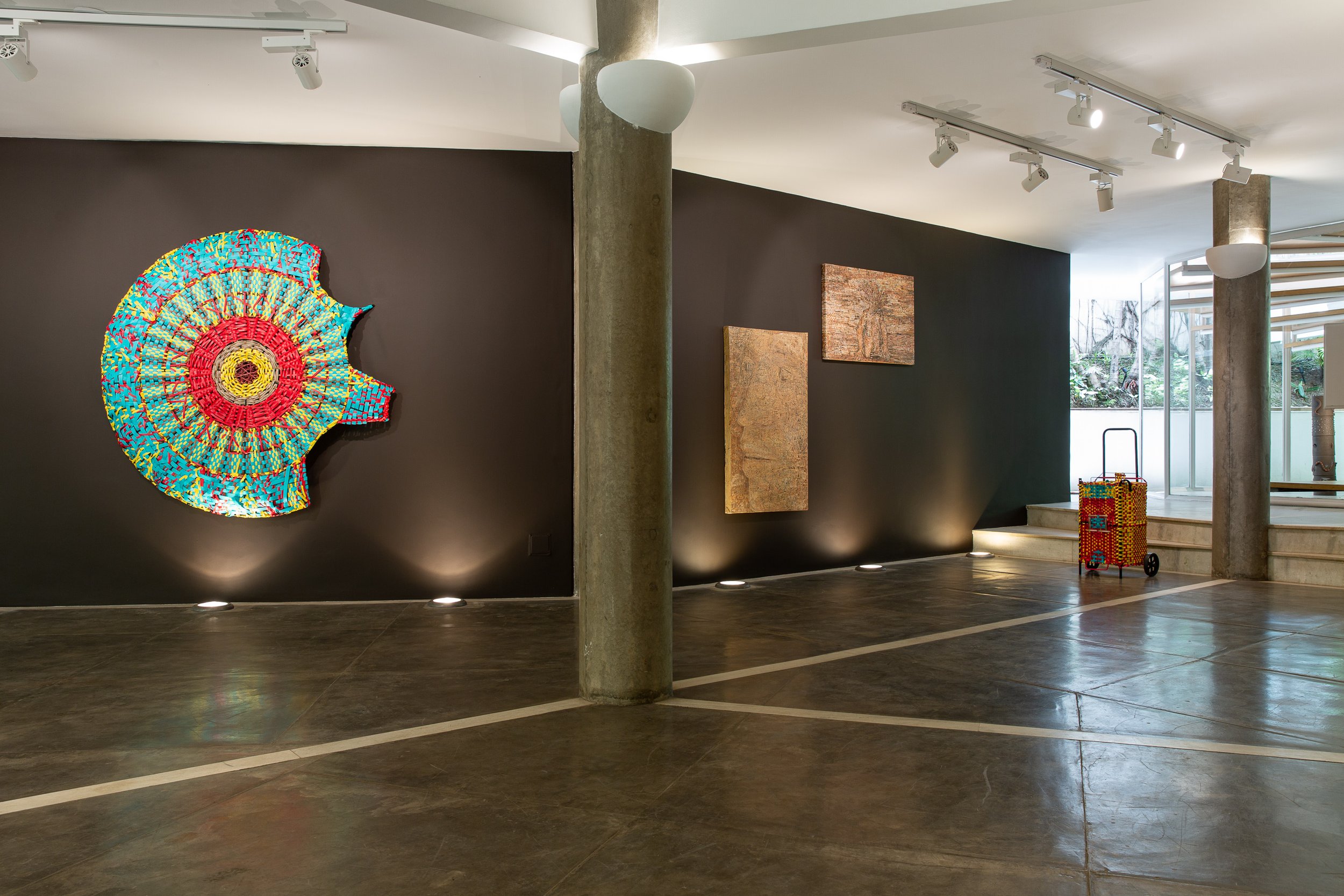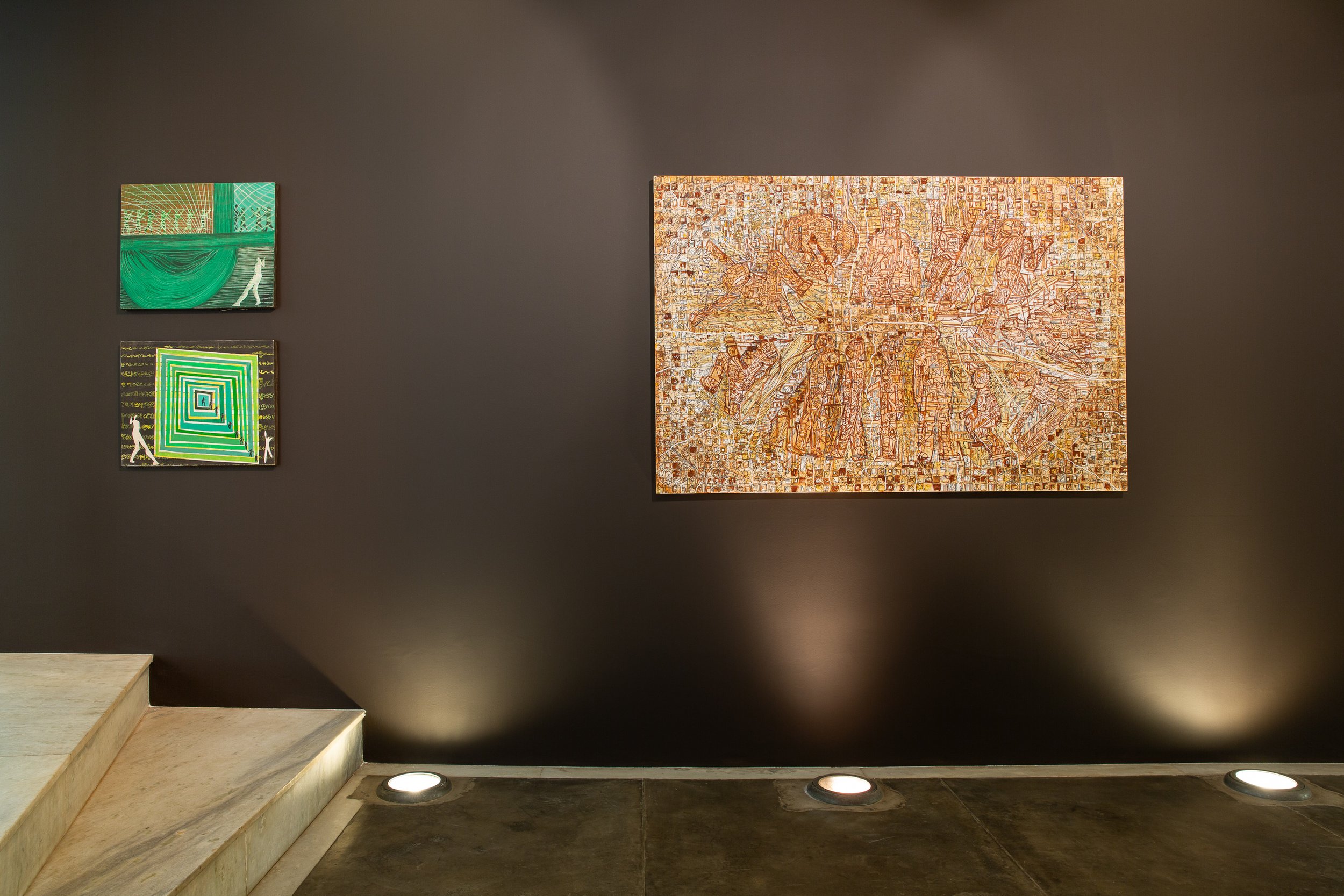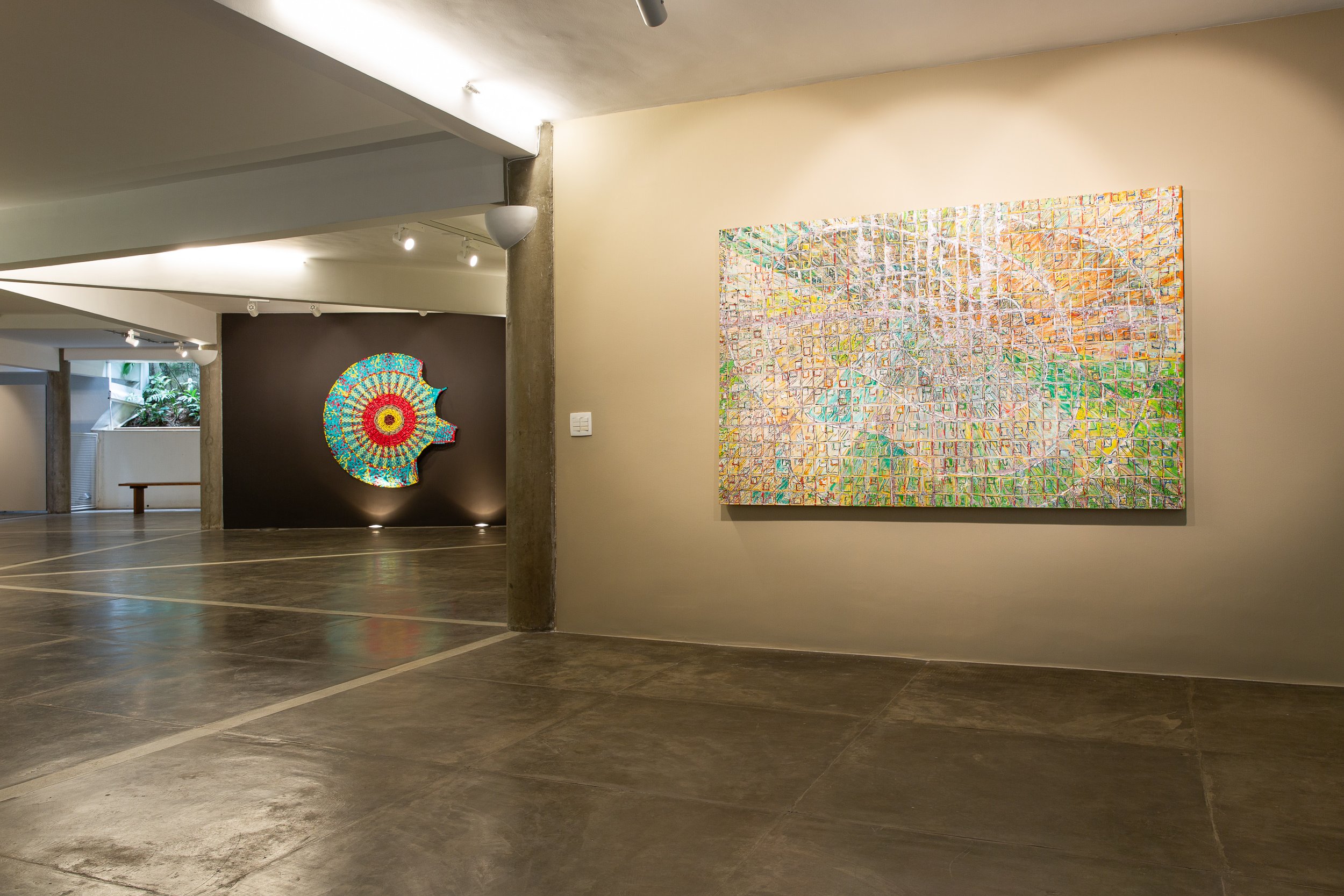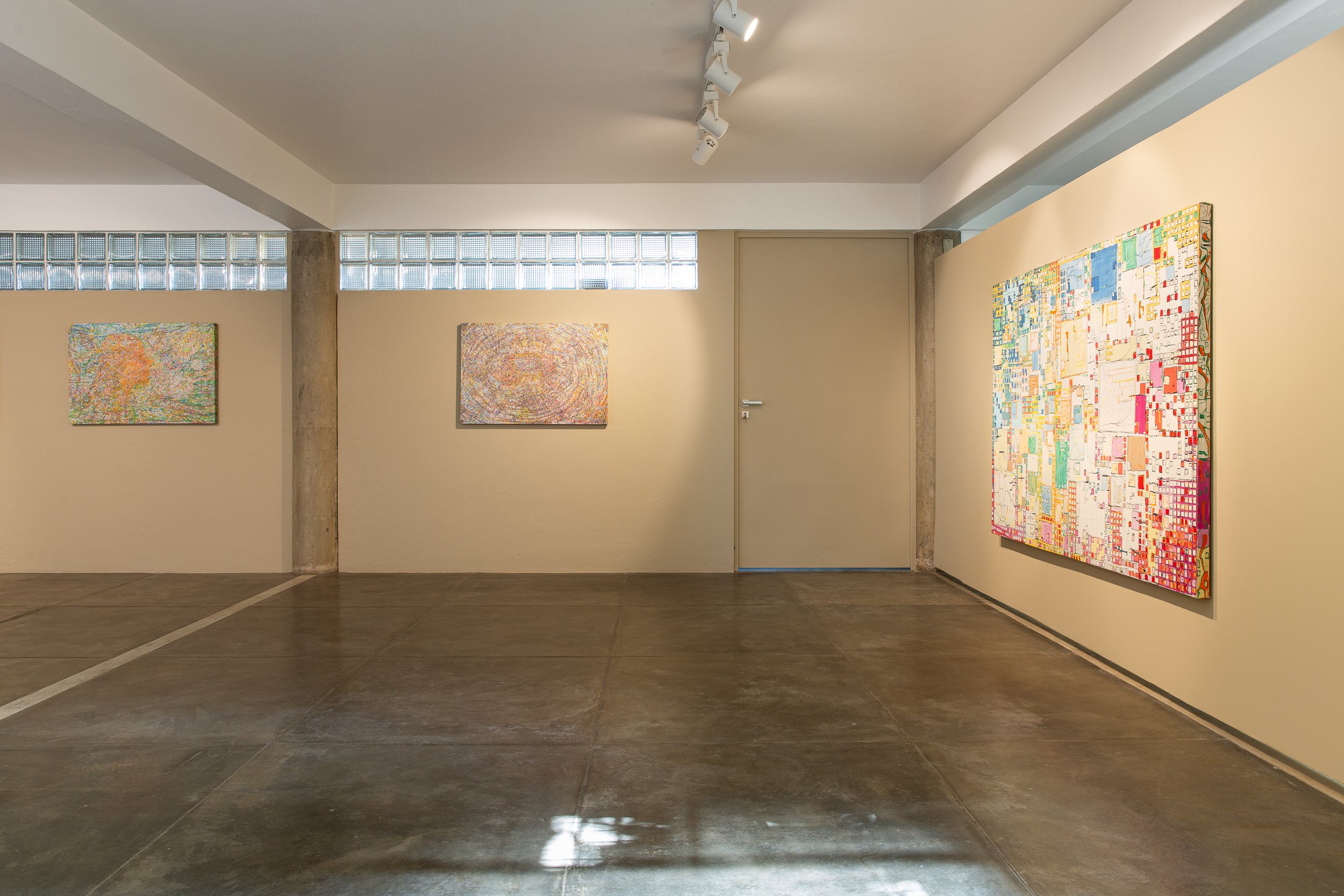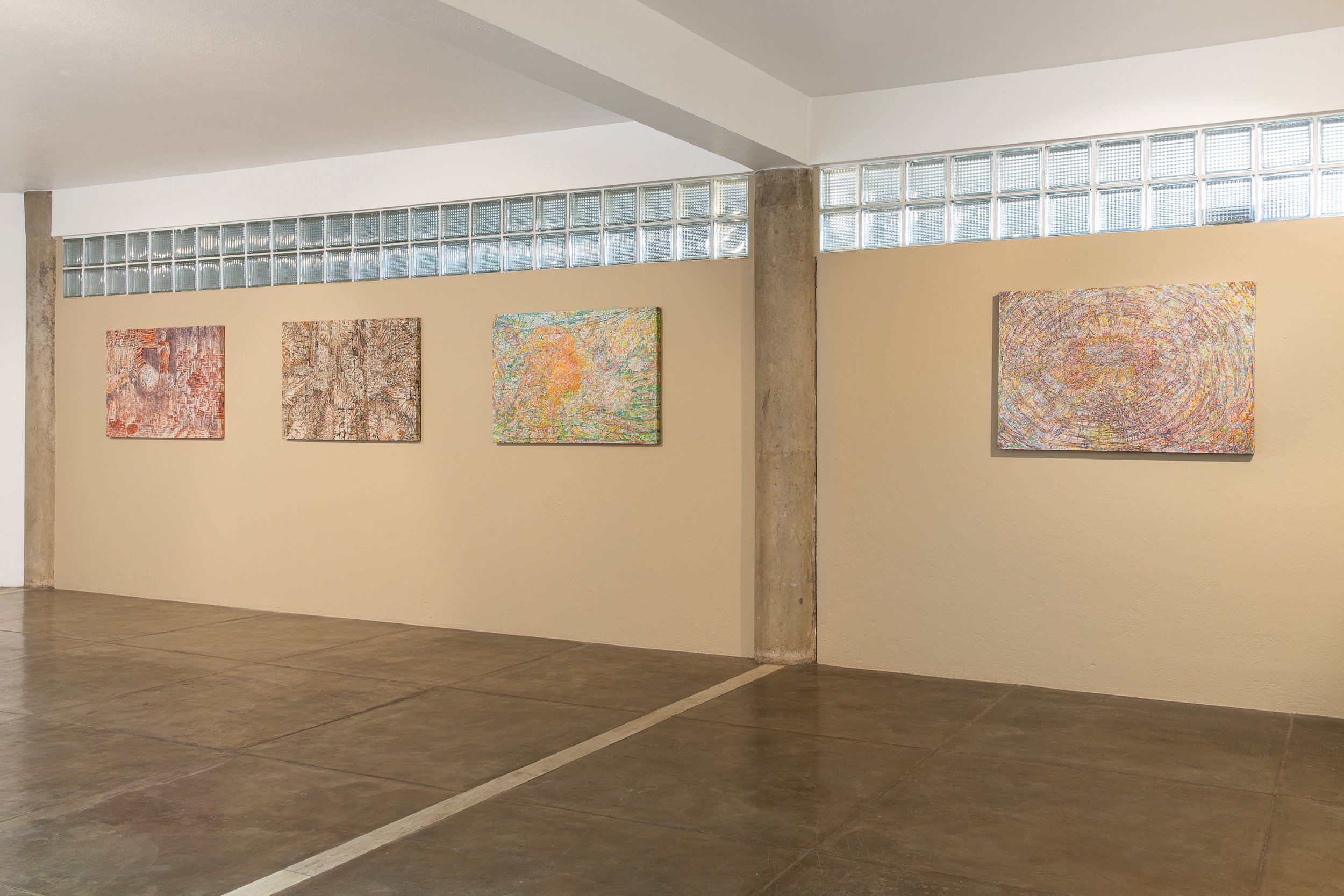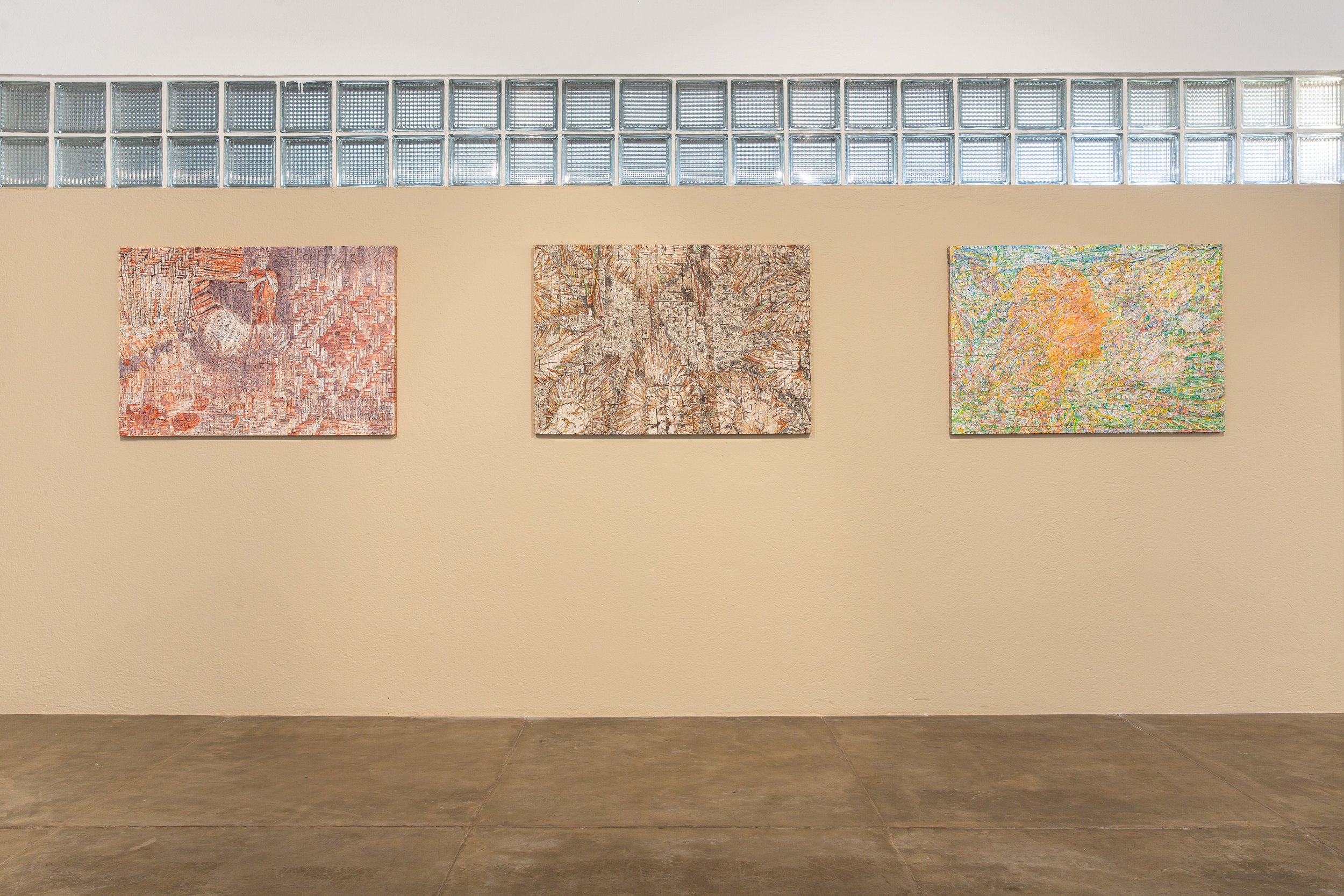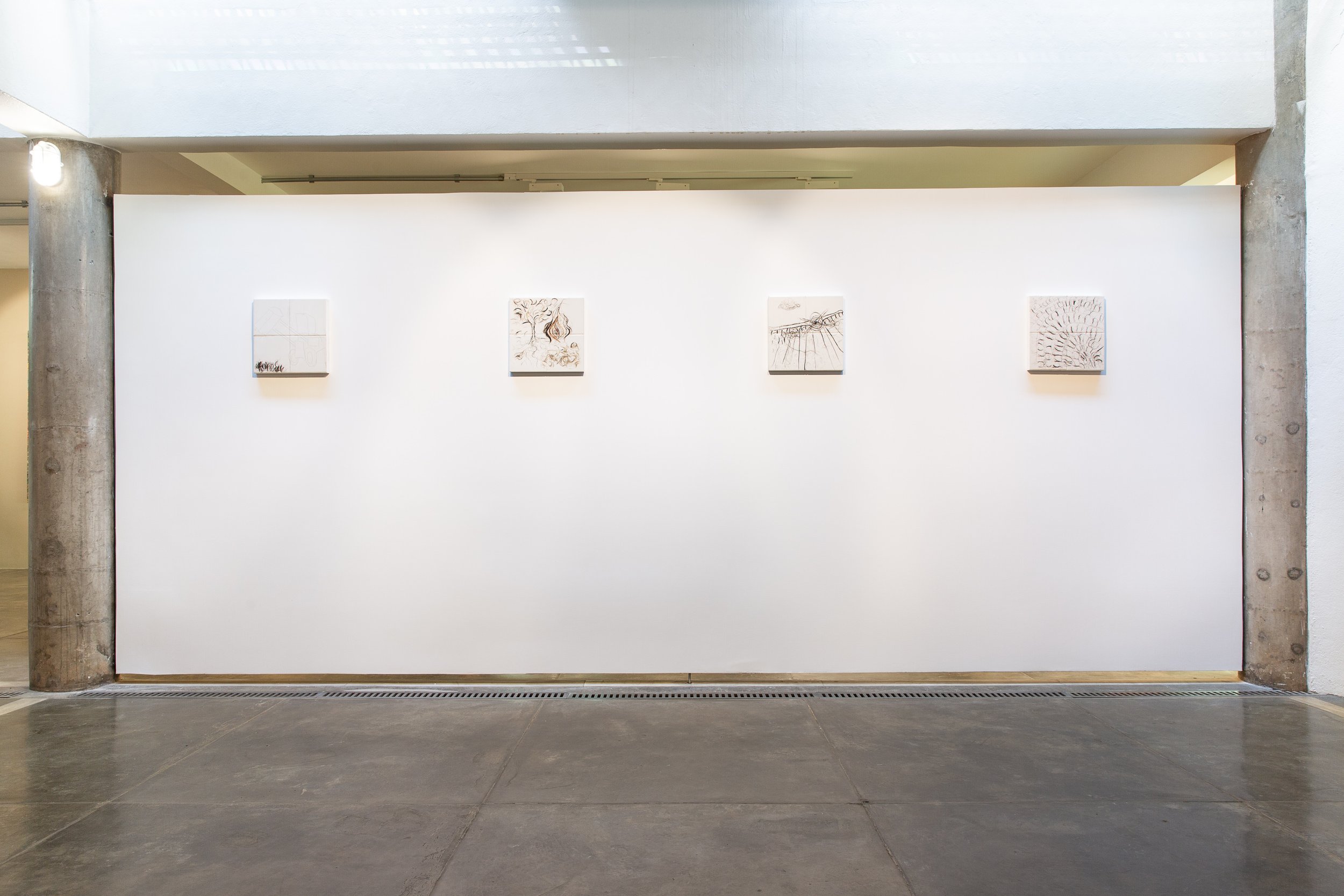
“The sensitive lies in the folds of time”
Ailton Krenak
The planet is crying out for a little peace in the face of the extractive voracity that never ceases its trance. A world that is alien to the organicity of life needs to live with residues, leftovers and scraps in the production of meaning, including in art. The challenge faced by the Kókir collective lies within this dilemma: to express the meaning of an original art without the availability of the vast choice of materials such as natural dyes, fibers and ceramics, which have supplied the craft of artisans, creators of expression and art in translation hoisted by the two artists who carry the Kókir collective.
The creations in this exhibition are committed to shaping artifacts from the materials left over in a world destroyed by the 'commodity society', as Kopenawa Yanomami calls earth-eating humanity. In the first decade of the 21st century, the collective already has elements of this hybrid language, which configures supermarket trolleys with the traditional patterns of Kaingang ethnic clans, as well as everyday objects: cages, fan grilles, plastic plants and market trolleys. Not just creating images or designs, but inventing uses for materials worn out by hyper-exposure, such as plastic, which is present in many objects. A trance between what was and what could still be, a mix/vain, in an effort to remake meaning in a discarded world in crisis of paradigms, which has long since reached the limit of materials. Iron, cement and glass have established the discourse of post-capitalism and fatten everything that appears in the landscape.
The sensitive lies in the folds of time, like the shapes or design of everyday objects in the Kaingang culture, an original people who also experience extractive violence in the constitutive elements of their creative repertoire, as well as in their bodies and territories. Mistura/vãja can be read here as an upset expression of the material reality of the world that has exhausted the sources of clean water and is about to remove the last fish from the river that continues to flow. But Kókir's mixture not only reflects the disorder, hunger and scarcity of traditional raw materials in indigenous territories. From the mix also emerge, in shared creations, many erased voices, extinct peoples and reinvented identities, struggling to resist. Bringing together earth, plastic and ancestral hunger in creations with people of different ethnicities, this mixture exposes synchronicities and contradictions. As the ancient makers of this persistent graphic matrix, which informs the ancestral marks and body paintings of each clan of the Kaingang ethnic group, warn us.
